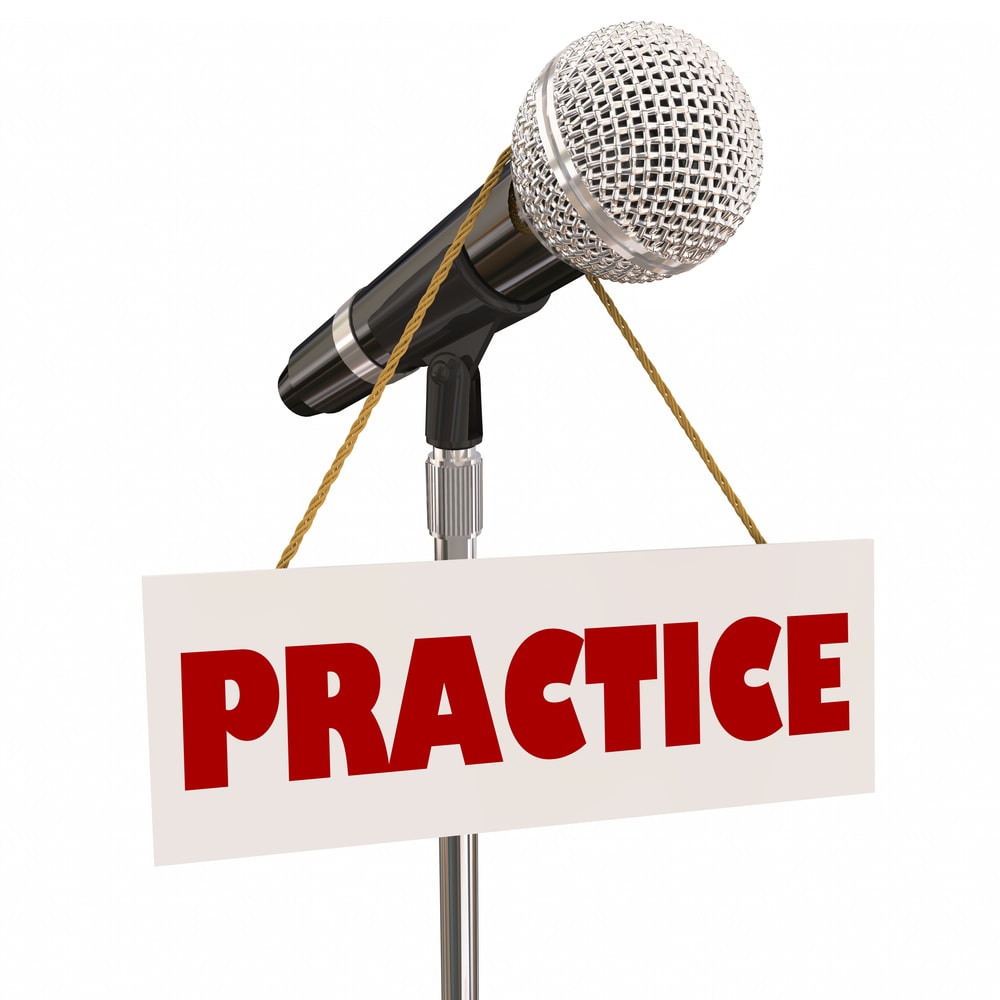
Presenting? Read these tips to help you improve.
You’ve been asked to give a presentation, and it’s a great chance to get your company’s story heard. But whether it’s for an internal meeting or an external conference, often the looming deadline and thought of standing up in front of people is daunting.
Almost all of my clients tell me they want to get better at giving presentations. And it’s simply not possible for me to coach them before every single one. The good news is that I don’t need to. We can all get better at presentations on our own. All it takes is the desire to improve and a little bit of time.
Speaking of time, I often hear my clients say things such as, “But I don’t have time to practice.” My response is that we all can find the time for things we prioritize.
Start with a Message Map
I coach all of my clients to start every presentation by making a one-page Message Map. With a Message Map, you can see your key messages on one page, so you quickly see what to say and say what you mean. Use this Message Map as you create your presentation or speech.
Practice your presentation
Once you’ve made your slides (or speaking notes if you are not using visual aids), you need to practice. Now, most of my clients don’t have huge blocks of time available to practice, and you probably don’t either. That can actually be a good thing, because over-practicing can backfire and make you sound too rehearsed. I recommend practicing once or twice, taking a break, and then practicing again later or the next day.

Making time to practice will improve your presentation skills.
Once you’ve done one or two practice rounds, record your next round. Use video if possible, but even audio is helpful. I use my smartphone, so there is no need for any fancy equipment. When you watch or listen to the playback, go easy on yourself. Instead of being harsh on yourself, watch or listen critically, and make a list of the things you want to improve. Try to be practical. Focus on things you can change, such as using too many verbal tics.
Before we get to improvement tips, one note on practicing: though some people advise it, I do not recommend rehearsing in front of a mirror. It can distract you by causing you to focus too much on how you look or your facial expressions. And it can backfire once you’re in front of a live audience because you’re too used to looking in one place. Everything you would discover by practicing in front of a mirror you will discover by recording a video rehearsal—without the added distractions.
Next, divide the list into types of improvements you want to make. For example, knowing your message or slide order better is a different type of improvement than getting rid of verbal tics such as “um.”
Prioritize your improvement goals
Now, prioritize your list, and pick one thing to improve first. This way, you can focus on one thing at a time, and you won’t get distracted or frustrated by trying to work on too many things at once. You’re human, and presenting can be nerve-racking. Chances are high that you did a better job than you think you did. We are often our own worst critics.
Once you’ve picked your first item to improve, the obvious next step is to work on improving it. If you need to improve your overall presentation or flow, go back to your Message Map and make sure you really know your messages and slide order. Then rehearse until you are really comfortable with your talking points and flow.
If, like many people I coach, you don’t like the sound of your own voice, first find out if it’s really as bad as you think. You can do this by asking a relative, co-worker or friend. Just make sure it’s someone who will give you an honest answer. If it’s still something you want to work on, make sure you’re breathing deeply from your diaphragm. Gary Genard offers other tips for improving your voice in his recent blog.
Verbal and non-verbal tics
If you’re working on a verbal tic such as “um” or “so,” think about why you’re using the tic. Most people I coach, myself included, often use a verbal tic to fill up space while we are remembering what we are supposed to say next. While it may sound contradictory, speaking more slowly can help. That’s because it gives you time to think about your next sentence.
Another way to help get rid of verbal tics is to get comfortable with pausing and silence. While when we are the speaker, a pause might seem like a long time, the audience member will barely notice it. The next time you practice your presentation, write your verbal tic word on a sticky note and put it where you will see it while you rehearse. Try catching yourself before you say it and pausing to think about your next sentence instead.
Tics aren’t always verbal. Some people play with their jewelry, or fiddle with things in their pockets. If this is you, do not wear jewelry or have anything in your pockets. You can even close your pockets using safety pins when you practice to help you correct this habit.
Record your live presentation
Once you’ve practiced enough to get more comfortable and work on the one thing you want to improve for this presentation, you need to record your actual presentation. Often the conference may be able to record it for you and get you a copy. If not, bring a small audio recorder and put it on the podium or near where you will be speaking.
Recording the live presentation will help you prepare the next time you are asked to speak. It will let you know how much you improved, and help you pick the one thing to work on next.
Giving a presentation can be stressful, but it’s a great way to tell your story to your target audience. Making and using a Message Map, recording your rehearsals, and picking one thing at a time to improve can help you become a terrific presenter.
For more tips on how to deliver on-message communications, subscribe to our blog.
Related Posts
Customers Care Only When Your Message Is Relevant, Resonant
No one can win customers by spouting messages people don’t care about. Only a relevant, resonant message can break through to customers. As adman...
Infographic: Fast-Forward Your Content Marketing
Take 7 steps to get content on track. Fast-Forward Content Marketing To fast-forward content marketing, use a practical 7-step approach. These 7 steps can help you launch or...
Spread your message to succeed
A client in a workshop asked, “Once you co-create your Message Map, what to do next?” Delivering the right message for your brand is...
Three tips to help your employees spot a crisis
The good news: most established companies have some sort of business continuity and crisis communications plan. Hopefully your company has one. The bad news:...





